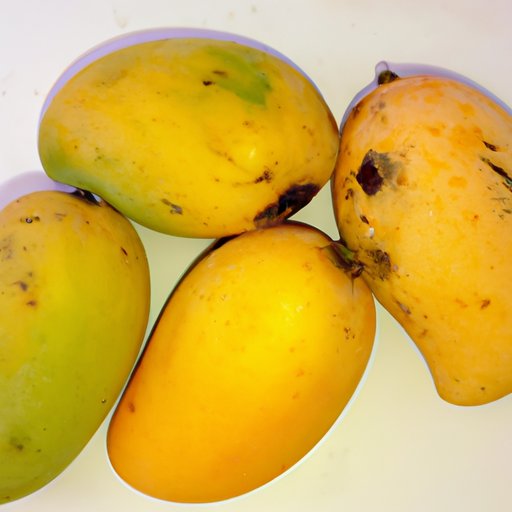Introduction
Mangoes are a popular fruit enjoyed around the world for their sweet and juicy flavor. However, many people struggle with determining when a mango is ripe, which can lead to disappointment and a less than optimal taste experience. In this article, we’ll explore different methods for identifying a ripe mango and share tips for choosing the perfect fruit.
Visual Cues
One of the easiest ways to tell if a mango is ripe is by looking at its appearance. Ripe mangoes should have vibrant, bright colors that are noticeably different from unripe ones. The most common color for ripe mangoes is a deep golden yellow, but some varieties may have a reddish or orange tinge.
In addition to its color, a ripe mango should also have a plump, full shape with no visible bruises or dark spots. The skin should be slightly soft but still firm, and you should be able to press the fruit lightly without leaving any marks.
Smell Test
The aroma of a mango is another important clue for determining its ripeness. Simply bring the fruit close to your nose and take a whiff. A ripe mango should have a sweet, fruity smell that’s easily distinguishable. If the mango doesn’t have any smell or has a slightly sour odor, it’s probably not ripe yet.
Touch and Feel
While the appearance and smell of a mango can provide helpful clues, the texture and feel of the fruit are also important factors to consider. To test the texture of a mango, gently press the skin with your thumb. A ripe mango will yield to pressure but still feel firm to the touch. Overripe mangoes will be very soft, while unripe fruit will be hard and unyielding to the touch.
When handling mangoes, be sure to avoid squeezing the fruit too hard as this can leave unsightly marks or damage the flesh. Instead, use your fingertips to gently press the skin around the stem and body of the mango.
Gently Squeeze
Another way to check if a mango is ripe is by performing a gentle squeeze test. Hold the mango in the palm of your hand and give it a slight squeeze with your fingers. A ripe mango will give slightly under pressure and should feel soft and yielding without being mushy. If the fruit is hard or doesn’t give at all, it’s likely not ripe yet.
Taste Test
The best way to determine if a mango is truly ripe is by tasting it. When biting into a ripe mango, you should experience a burst of sweet, juicy flavor that’s unmistakably delicious. The texture should be soft and tender without any stringiness or toughness.
If the mango tastes sour or has a stringy texture, it’s not yet ripe. If you find that the fruit is too sweet for your taste, it may be slightly overripe, but it’s still safe to eat. Mangoes come in a wide range of varieties, each with its own flavor profile and sweetness level, so it’s important to experiment with different types to find your favorite.
Pick Date
Finally, the date on which the mango was picked can also be a useful indicator for determining its ripeness. Mangoes are typically harvested when they’re still unripe and allowed to ripen off the tree. If you know the date on which the fruit was picked, you can use this information to estimate when it may be ripe.
Generally, it takes about 5-7 days for a mango to ripen after it’s been picked. If you notice that the mango has been sitting for longer than a week, it’s likely overripe and may not be suitable for consumption.
Conclusion
Identifying a ripe mango can be tricky, but with these tips and techniques, you’ll be able to choose the perfect fruit every time. Remember to look for visual cues like color and shape, smell the fruit to detect a sweet aroma, and gently squeeze it to test its texture. If all else fails, the taste test is the most reliable method for determining ripeness. With a little practice, you’ll be enjoying the sweet, juicy flavor of ripe mangoes in no time.
